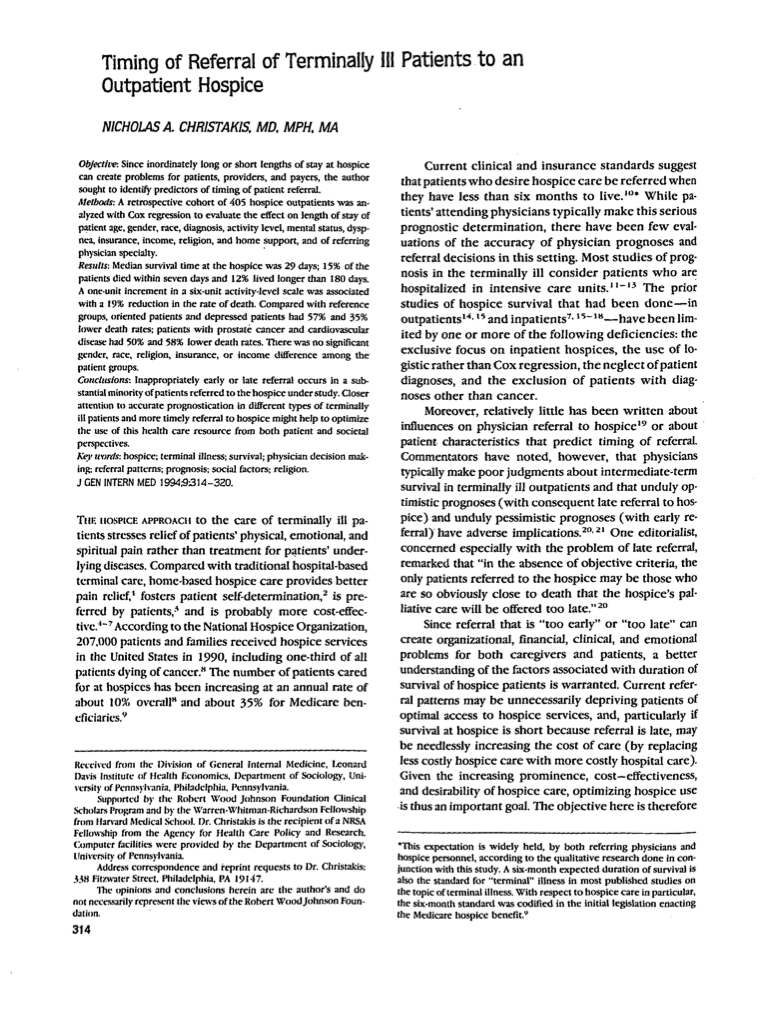
Timing of Referral of Terminally Ill Patients to an Outpatient Hospice
Abstract
Objective: Since inordinately long or short lengths of stay at hospice can create problems for patients, providers, and payers, the author sought to identify predictors of timing of patient referral.
Methods: A retrospective cohort of 405 hospice outpatients was analyzed with Cox regression to evaluate the effect on length of stay of patient age, gender, race, diagnosis, activity level, mental status, dyspnea, insurance, income, religion, and home support, and of referring physician specialty.
Results: Median survival time at the hospice was 29 days; 15% of the patients died within seven days and 12% lived longer than 180 days. A one-unit increment in a six-unit activity-level scale was associated with a 19% reduction in the rate of death. Compared with reference groups, oriented patients and depressed patients had 57% and 35% lower death rates; patients with prostate cancer and cardiovascular disease had 50% and 58% lower death rates. There was no significant gender, race, religion, insurance, or income difference among the patient groups.
Conclusions: Inappropriately early or late referral occurs in a substantial minority of patients referred to the hospice under study. Closer attention to accurate prognostication in different types of terminally ill patients and more timely referral to hospice might help to optimize the use of this health care resource from both patient and societal perspectives.
Citation:
N.A. Christakis, "Timing of Referral of Terminally Ill Patients to an Outpatient Hospice" Journal of General Internal Medicine, 9(6): 314-320 (June 1994)